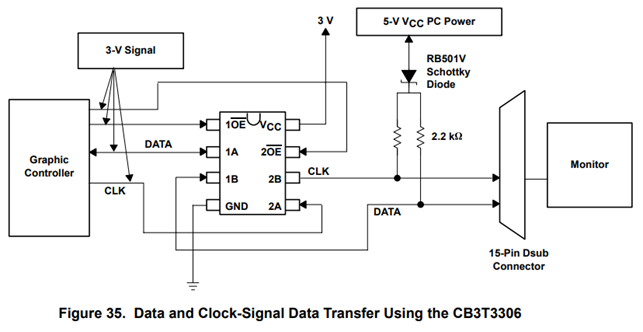Other Parts Discussed in Thread: SN74CBT1G384, TXB0101, LSF0101, SN74CB3T1G125
Dear Technical Support Team,
I'd like to use bidirectional level shift circuit between 3.3V and 5V with SN74CBT1G125.
I refer following 384 circuit and add 5V pull up to OEn and signal line.
If you have any concern, could you give me advice? Especially power on / power off.
■5V pullup for OEn → output disable during power up
■5V pullup for signal line → shift 5V from 3.3V
Best Regards,
ttd




